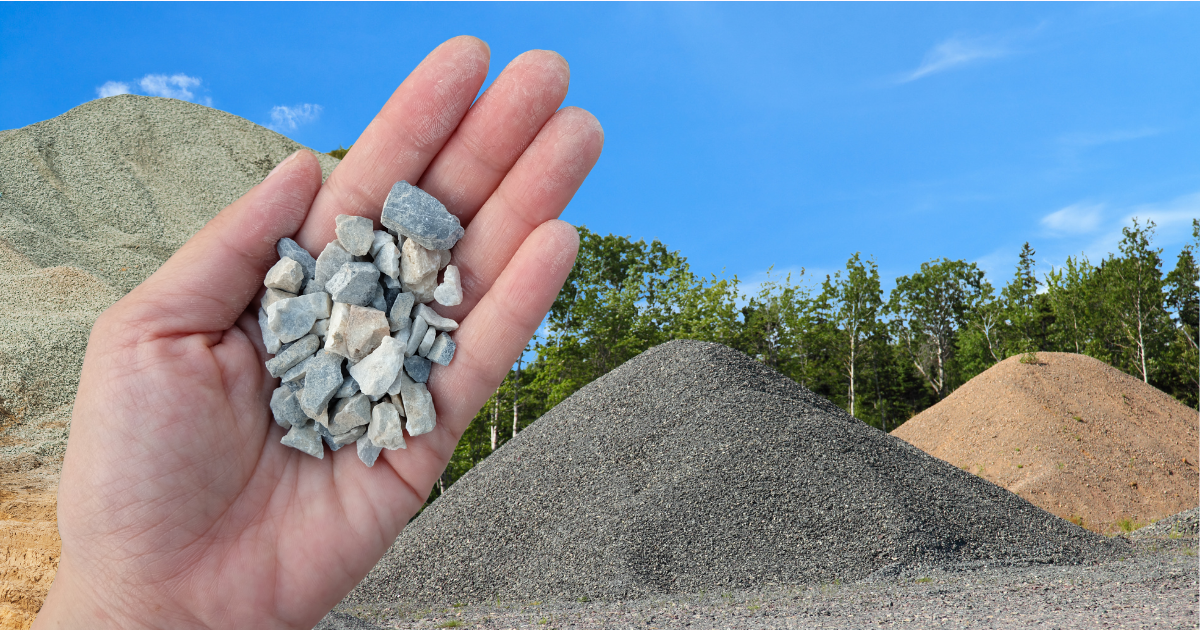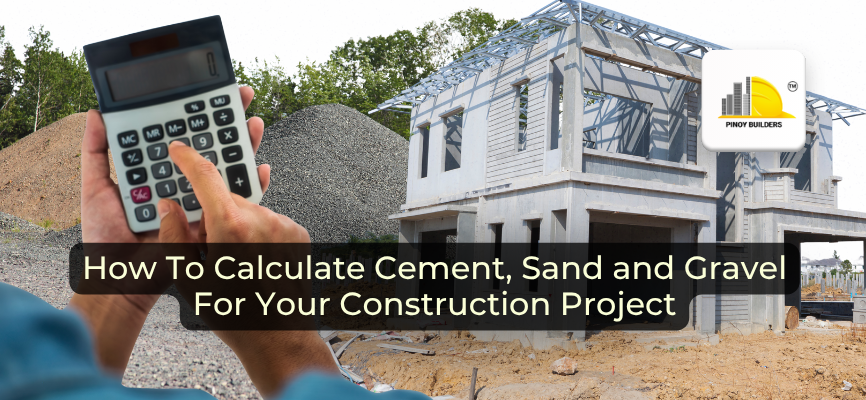Whether you’re laying a floor slab or building a small patio, accuracy matters. Estimating cement, sand, and gravel correctly helps avoid material shortages, costly overpurchases, and construction delays. It also makes planning more efficient and budgeting more precise.
When material estimates are off, the entire schedule can suffer. Extra trips to the hardware store or unexpected costs can throw off your timeline. Fortunately, knowing how to calculate materials keeps you in control of your project, no matter the scale.
In this article, you’ll learn how to calculate the cement, sand, and gravel you need, plus where to apply these formulas in real-life situations.

Manual Calculation: The Basic Formula
Manual calculations are essential in computing the right amount of sand, gravel, and cement for your project. But before estimating your materials, it’s helpful to understand the standard values used in concrete calculations. There are constants to consider, such as density, volume conversions, and mix classifications, to ensure your results are more accurate and easier to apply on-site.
- Density of cement = 1,440 kg/m³
- Density of sand = 1,450 to 1,500 kg/m³
- Density of gravel/aggregate = 1,450 to 1,550 kg/m³
- 1 bag of cement (50kg) = 0.0347 m³ or 34.7 liters
- 28.8 bags = 1 cubic meter of cement
- Specific gravity of cement = 3.15
- Common cement grades = 33, 43, and 53 (corresponding to compressive strengths of 33, 43, and 53 N/mm²)
When estimating, use dry volume = wet volume × 1.54. For example, 1 m³ of concrete mix becomes 1.54 m³ of dry materials.
Standard Ratio for Concrete Mix
For general use, the common mix is 1:2:4 (cement:sand: gravel), but for stronger concrete like M-20, use 1:1.5:3.
Here’s what those numbers mean:
- 1 part cement
- 1.5 to 2 parts sand
- 3 to 4 parts gravel
Choose the ratio depending on your concrete class. For example:
- Class A (M-20) = 1:1.5:3
- Class B (M-15) = 1:2:4
- Class C (M-10) = 1:3:6
Step-by-Step Method
1. Know the total volume of concrete you need
Formula: Length × Width × Thickness = Volume (in m³)
Adjust to dry volume: Multiply the result by 1.54
2. Choose your mix class and bag size
Decide on Class A, B, or C, and whether you’re using 40kg or 50kg cement bags.
3. Use the concrete proportion table to multiply the volume
This table is a quick guide made for people who are buying cement in specific bag sizes, like 40kg or 50kg. Instead of calculating everything from scratch using the 1:2:4 or 1:1.5:3 ratios, they can just use these ready-made multipliers to save time.
Example for Class A using 40kg bags:
- Cement = Volume × 9
- Sand = Volume × 0.5
- Gravel = Volume × 1
This means for every 1 cubic meter (m³) of concrete, you’ll need:
- 9 bags of 40kg cement
- 0.5 m³ of sand
- 1 m³ of gravel
So if you:
- Know your concrete volume (like 0.9 m³)
- Know the cement bag size you’re using (40kg in this case)
- And know your mix class (like Class A)
You can just multiply the volume by the numbers in the table (like 9 for cement) to get your material estimates.
4. Convert to the number of cement bags
If you are not using the multiplier method, you can manually compute the cement volume:
Cement volume = Volume × (cement part / total parts)
Then divide by 0.0347 m³ per bag to get the number of bags
Sample Calculation
Scenario: A 3m × 3m floor slab, 0.1m thick.
- Volume = 3 × 3 × 0.1 = 0.9 m³
- Cement = 0.9 × (1/7) = 0.129 m³ = 3.7 bags (always round up a bit to be safe, so consider 3.7 bags as 4 standard 50kg bags of cement)
- Sand = 0.9 × (2/7) = 0.257 m³
- Gravel = 0.9 × (4/7) = 0.514 m³
You can slightly increase these quantities to account for spillage or mixing losses on-site.
Where These Calculations Help Most
Knowing how to manually compute your concrete materials comes in handy in more ways than one. These calculations are especially useful in situations where speed, accuracy, and resource planning matter.
Here are some common scenarios where they make a real difference.
- DIY Projects: Ideal for household repairs, concrete paths, or fence posts.
- Site Supervision: Helps site engineers or foremen double-check before ordering.
- Budget Planning: A great way to get early cost estimates before buying.
- Remote Projects: Useful when calculators or apps aren’t available on-site.

Manual Skills Meet Modern Tools
Learning how to compute cement, sand, and gravel manually gives builders the confidence to plan better, work smarter, and avoid mistakes. Whether you’re managing a team or working on your own, knowing the basics helps reduce stress and keeps your project moving forward.
To save even more time, try verifying your manual estimates with Holcim’s FREE cement calculator. It offers fast and easy checks before you start your mix










